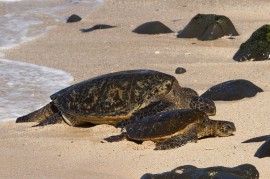Operationalizing big data for ocean conservation
MPAs have long been recognised as a tool to protect marine biodiversity. Through temporal and/or spatial closures and management of designated areas, the maintenance and recovery of special ecosystems, processes, habitats and species and their sustainable use and conservation are promoted. Damaging practises such as destructive fishing methods and other harmful human activities are excluded in order to create protected zones for species’ reproduction and growth. Today most MPAs can be found in coastal waters worldwide whereas large MPAs in offshore waters beyond the national jurisdiction are still rare.
For my PhD project I focus on how large Marine Protected Areas (MPAs) influence ecosystem services and fisheries activities. I am looking at effects of the establishment of MPAs on fishing fleet behaviour such as a possible relocation of fishing efforts to other areas or to the borders of MPAs to benefit from spillover effects. It is important to understand the fishermen’s reactions to protected areas in order to develop a functional network of High Seas MPAs protecting marine resources from overexploitation.
I am participating in the German-Canadian Transatlantic Ocean System Science and Technology (TOSST) graduate programme which addresses key issues facing the North Atlantic under three distinct themes: Seafloor Structures, 4D water mass dynamics and Ecosystem Hotspots. The graduate programme is hosted by Dalhousie University in Halifax, Canada and the GEOMAR as well as Christian-Albrechts University in Kiel, Germany.
Details